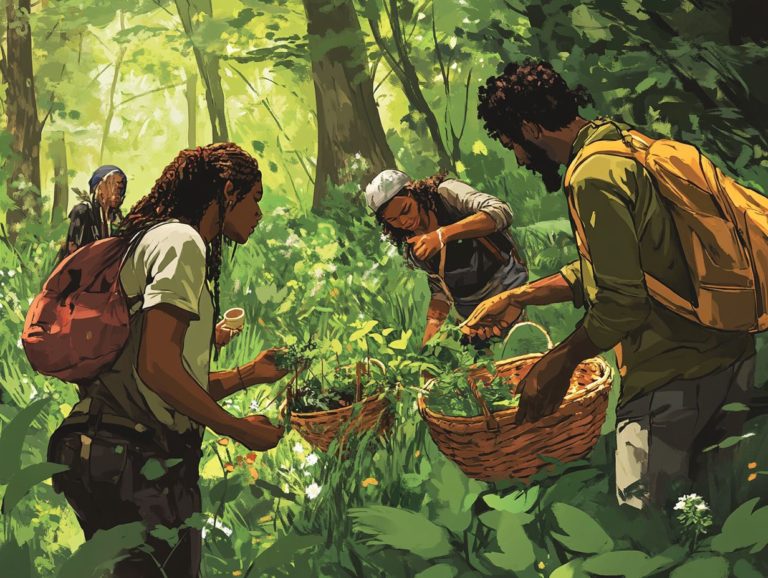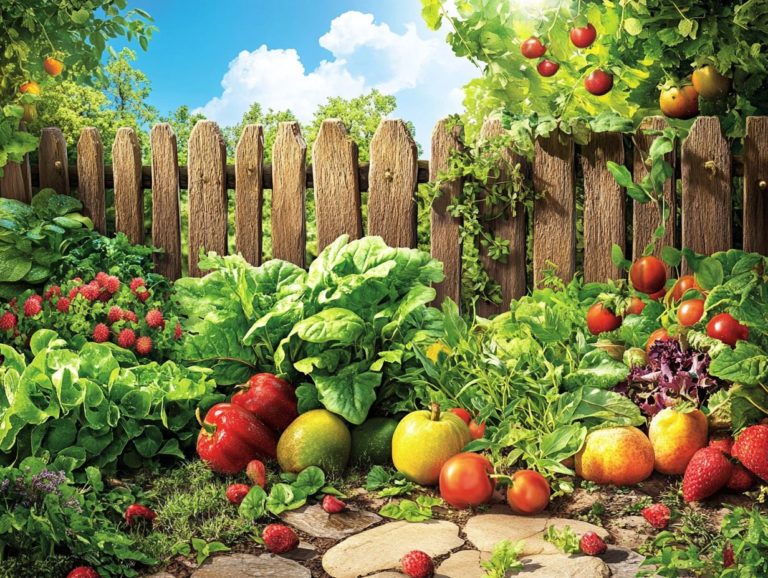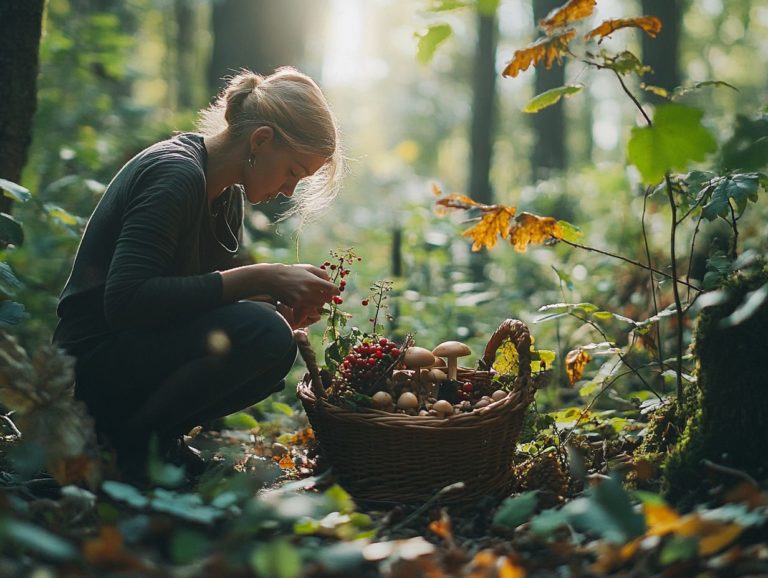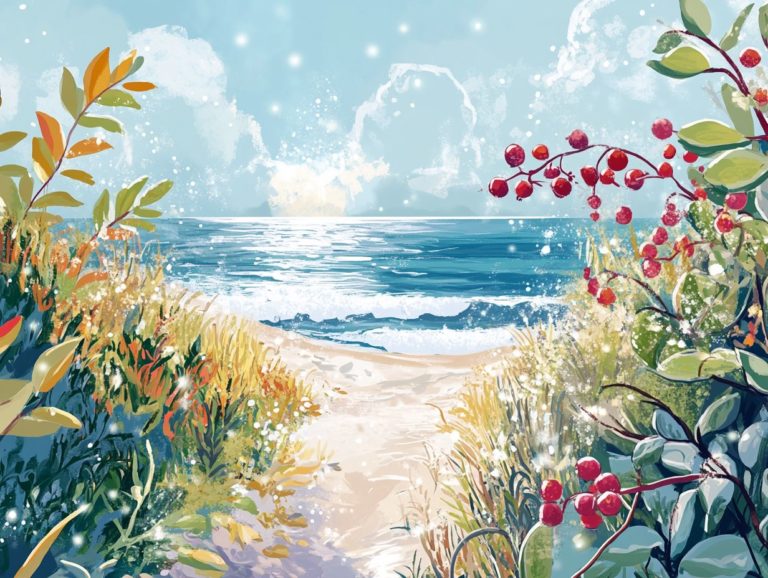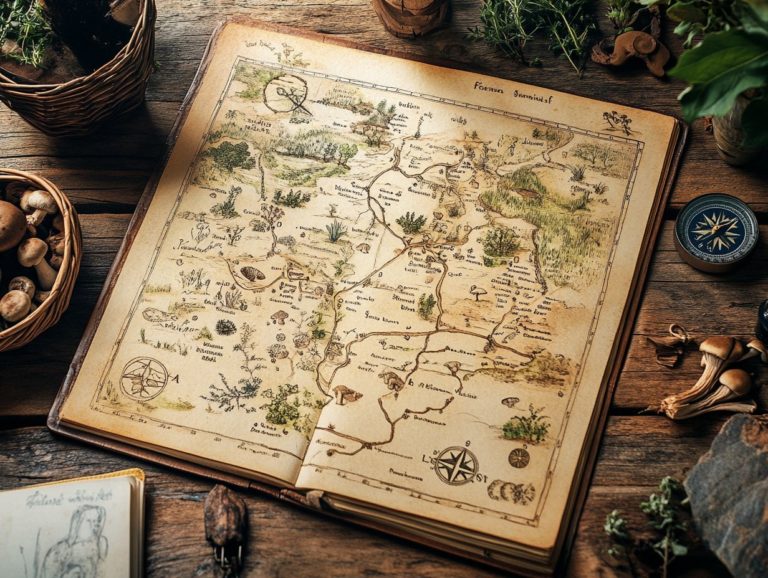What are the Best Resources for Local Foraging?
Local foraging offers you a unique opportunity to deepen your connection with nature while uncovering the diverse array of edible plants and fungi that may be waiting just outside your door.
This article delves into the myriad benefits of foraging, highlighting its positive effects on both your health and the environment, alongside practical advice for identifying common species.
You ll also find invaluable tools, resources, and safety tips designed to ensure your foraging adventures are both enjoyable and rewarding.
Embrace sustainable practices that not only protect our ecosystems but also allow you to relish the abundant gifts that nature has to offer.
Contents
- Key Takeaways:
- Benefits of Local Foraging
- How to Identify Edible Plants and Fungi
- Tools and Resources for Local Foraging
- Online Communities and Classes
- Safety Considerations for Local Foraging
- Sustainable Foraging Practices
- Frequently Asked Questions
- What are the Best Resources for Local Foraging?
- How can I find field guides for local foraging?
- Are there any online databases for local foraging?
- What are the benefits of joining a local foraging group?
- How do I know if an experienced forager is trustworthy?
- What precautions should I take when foraging for local plants?
Key Takeaways:
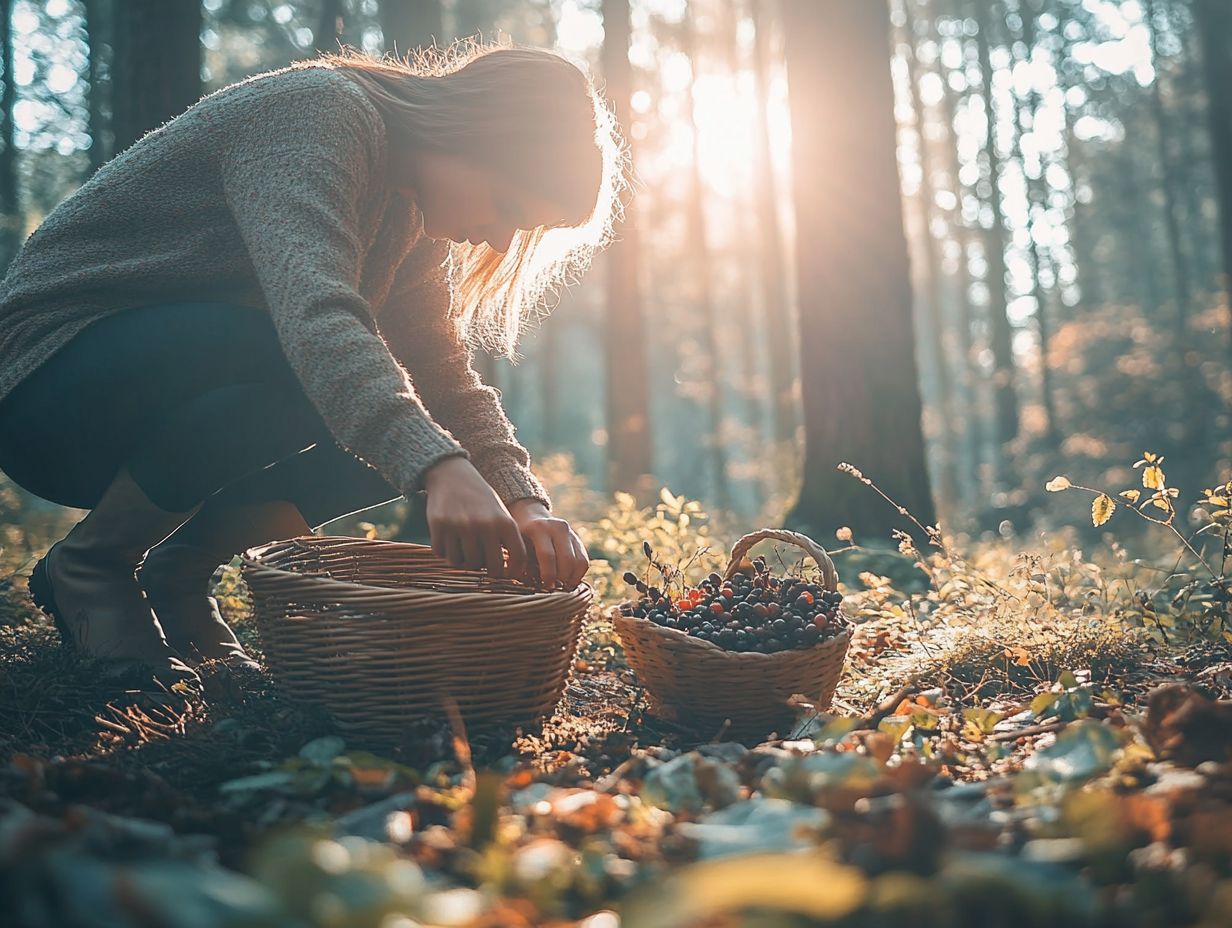
- Foraging boosts your health by connecting you with local food sources it’s good for you and the planet!
- Familiarize yourself with common edible species and learn proper identification techniques to ensure safe and successful foraging trips.
- There are a variety of tools and resources available for local foraging, including guidebooks, apps, online communities, and classes. Use these to expand your knowledge and connect with other foragers.
What is Local Foraging?
Local foraging, often known as urban foraging, is the delightful practice of gathering wild edibles like mushrooms, berries, nuts, and greens right in the heart of urban spaces, particularly in places like Minnesota parks and community gardens.
This exciting tradition lets you dive deep into nature’s wonders, allowing you to discover the rich tapestry of edible plants that flourish in your own backyard.
Not only is this practice sustainable, but it also promotes a healthier lifestyle and nurtures a profound appreciation for local ecosystems and biodiversity.
As you become more conscious of your food sources, local foraging invites you to explore your surroundings, hone your skills, and savor seasonal delights.
Common treasures you might encounter include dandelion greens, wild garlic, and a variety of mushrooms, each boasting their own unique flavors and nutritional benefits.
To embark on this rewarding journey, consider learning from local foraging groups, tapping into online resources, or participating in workshops that teach sustainable collection techniques (collecting plants without harming their environment).
Through these avenues, you’ll not only gain invaluable knowledge but also cultivate a sense of community while actively supporting your local environment.
Benefits of Local Foraging
The benefits of local foraging go far beyond the simple pleasure of gathering; they encompass a wealth of environmental, health, and community advantages, especially in urban settings.
By honing your skills in identifying and harvesting wild edibles, you can tap into nature’s generous bounty while bolstering your well-being through the consumption of nutritious, locally-sourced foods.
Embracing sustainable harvesting practices is vital for protecting local ecosystems, allowing you to safeguard the environment against challenges such as soil contamination and toxic sites.
Environmental and Health Benefits
Urban foraging presents profound environmental and health benefits, making it an essential practice in vibrant communities like the Twin Cities.
By harvesting wild edibles, you cultivate a deeper connection with nature while gaining access to nutrient-dense food sources that can serve as healthful remedies.
When you promote sustainable harvesting techniques, you play a crucial role in enhancing the health of local ecosystems while remaining mindful of issues like environmental contamination.
As you embark on your foraging journey, you’ll discover a range of species native to Minnesota think ramps, wild leeks, and lamb’s quarters all brimming with vitamins and minerals vital for a balanced diet.
Incorporating these wild foods into your meals allows you to diminish your reliance on commercially processed options, which often come with a side of additives.
This practice fosters a heightened awareness of habitat preservation and biodiversity, acting as a grassroots movement to combat pollution and environmental degradation.
By practicing sustainable foraging, you actively support your local flora and fauna, ensuring that these natural treasures thrive for generations to come.
How to Identify Edible Plants and Fungi
Identifying edible plants and fungi is an essential skill for anyone keen on urban foraging. It allows you to safely indulge in the diverse wild foods available in your surroundings.
Through thorough identification courses, you can learn to distinguish between safe and toxic species. This includes a variety of nuts, greens, and mushrooms that thrive in local parks.
Mastering these skills not only elevates your foraging experience but also deepens your understanding of the ecological dynamics at work.
Common Edible Species and Identification Techniques
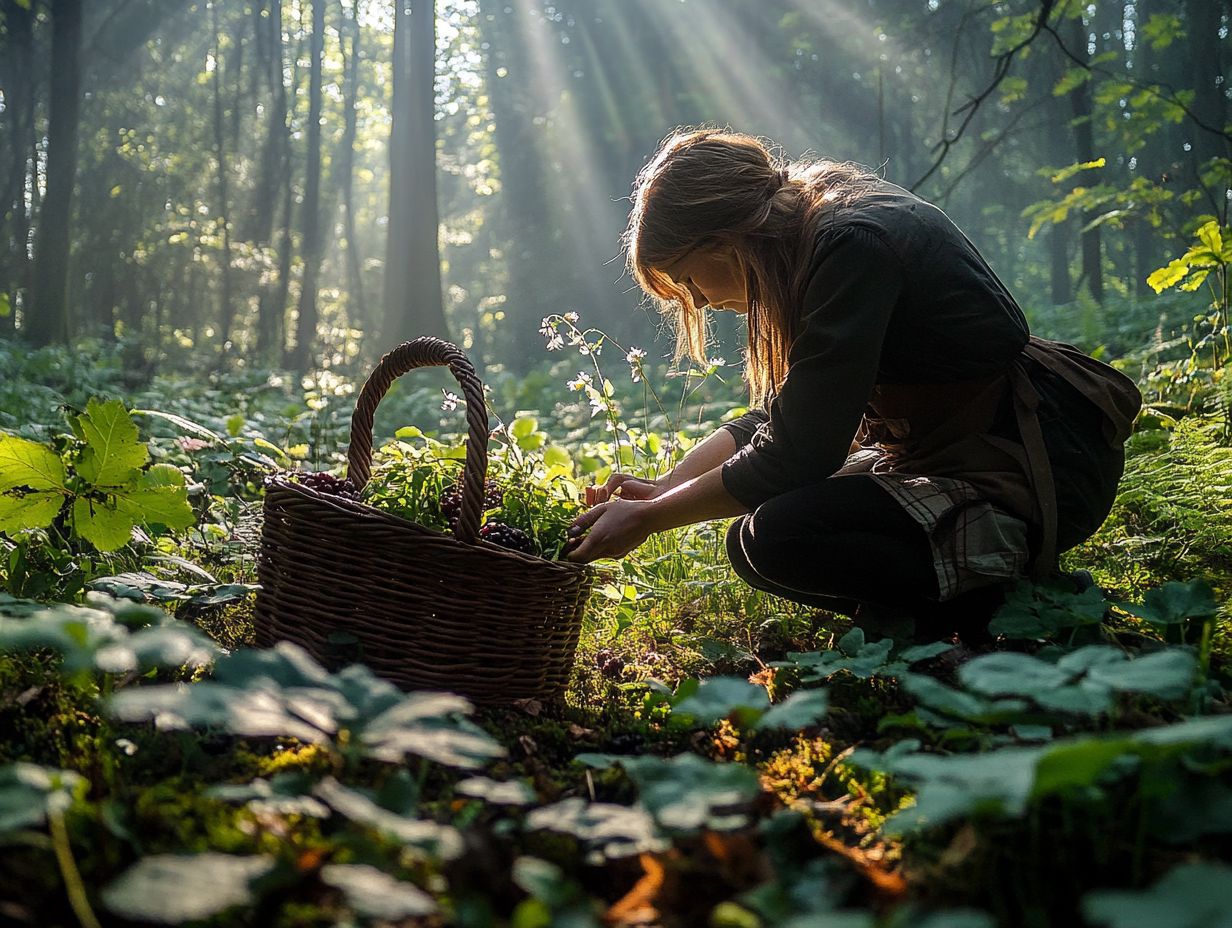
When you embark on the adventure of urban foraging, grasping the nuances of common edible species is paramount for a safe and enjoyable experience.
Among the most coveted wild edibles you ll encounter are mushrooms, berries, nuts, and various greens that flourish in local ecosystems.
By familiarizing yourself with key identification markers, you can confidently harvest these nutritious plants while minimizing the risk of misidentification.
Take wild garlic, for instance; its distinct aroma and broad leaves make it relatively easy to spot. On the other hand, dandelion greens showcase jagged edges and vibrant yellow flowers.
It s vital to understand the distinctions between edible species and their toxic counterparts; for example, poisonous water hemlock closely resembles the innocuous wild carrot.
Utilizing field guides or mobile applications dedicated to urban foraging can significantly help you identify these plants with confidence.
Engaging with local foraging groups or attending workshops can provide invaluable hands-on experience. This transforms your journey into the world of edible urban flora into an enlightening and safe endeavor.
Tools and Resources for Local Foraging
Get excited! Having the right tools for foraging makes your adventure more enjoyable and safe.
Guidebooks and apps tailored to urban foraging provide invaluable insights into edible plants and fungi. They serve as trusted companions on your journey.
Engaging with online communities allows you to connect with fellow enthusiasts, sharing tips and experiences that enrich your foraging repertoire.
Connecting with local herbalists can offer you unique perspectives on the healthful uses of various wild edibles. This adds depth to your foraging endeavors.
Guidebooks and Apps
Guidebooks and apps are your essential allies in the world of urban foraging. They provide crucial information on identifying and harvesting wild edibles.
These resources enhance your foraging adventures by giving you clear guidelines, key identification features, and tips for sustainable harvesting practices meaning methods that won t harm the plant or its environment while picking.
With the right guidebook or app in hand, you can confidently explore your local areas, whether you’re a newcomer or a seasoned forager.
Many popular guidebooks offer detailed illustrations and descriptions that enable you to differentiate between similar species. This significantly reduces the chances of misidentification.
Some apps take it a step further by incorporating GPS functionality, allowing you to pinpoint your exact location and discover nearby foraging spots with real-time data.
A few even let you share your findings, creating a vibrant community of foragers eager to exchange insights and discoveries.
By utilizing these resources, you deepen your understanding of wild edibles and champion ethical foraging practices. This ensures that these precious natural resources remain abundant for generations to come.
Online Communities and Classes
Joining online communities and participating in identification courses (courses that teach you how to identify edible plants) can greatly improve your foraging skills and knowledge. These resources offer invaluable support for urban foragers like yourself.
These platforms connect you with fellow enthusiasts, local herbalists, and experts who share insights, experiences, and essential foraging guidelines. Engaging in classes hones your identification techniques and deepens your understanding of the ecological significance of wild edibles.
By tapping into these resources, you gain access to a treasure trove of information, ranging from identification methods to sustainable harvesting practices. Local herbalists often play a pivotal role in your learning journey, providing personalized guidance and invaluable tips that only seasoned foragers know.
Online forums and workshops facilitate the exchange of ideas, fostering a sense of community and encouraging collaboration among foragers. Whether you explore this knowledge through social media groups or dedicated websites, you’ll find a wealth of information that enables you to navigate the rich world of foraging safely and enjoyably.
Safety Considerations for Local Foraging
Understanding safety guidelines is crucial. They not only protect you but also empower you to enjoy the thrill of foraging! Safety considerations are vital when you engage in local foraging, as they safeguard your health and well-being while minimizing the risks that come with consuming wild edibles.
It s crucial to understand foraging guidelines, especially in urban environments where potential hazards like soil contamination and toxic sites may lurk. By following these safety protocols, you can fully embrace the joys of urban foraging without jeopardizing your health.
Precautions and Guidelines
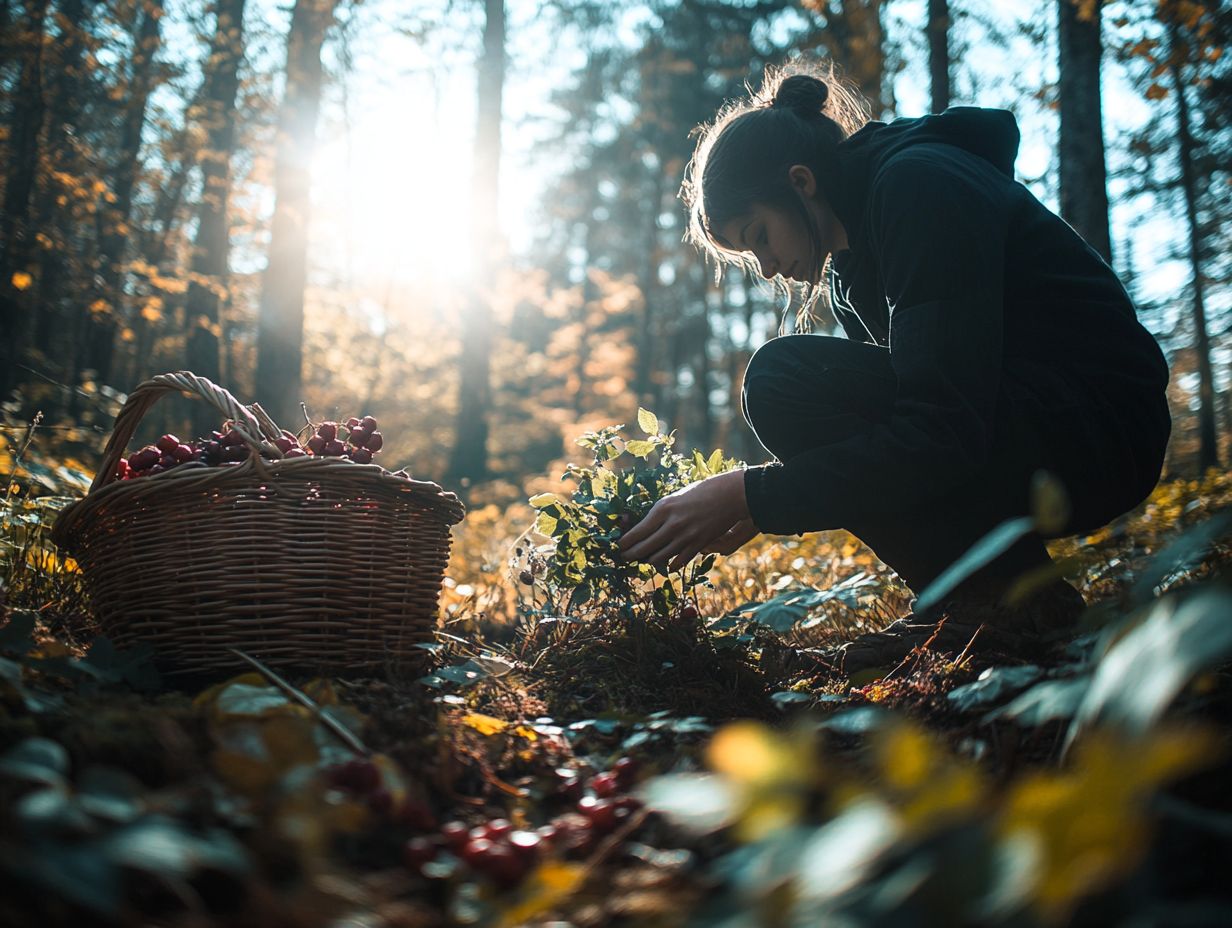
Adhering to proper precautions and foraging guidelines is essential for safe and responsible urban foraging, especially when navigating public land where environmental contamination might pose risks. You should be aware of soil contamination issues, particularly in urban settings, and have a clear understanding of which areas are safe for harvesting.
This knowledge enables you to enjoy the rich diversity of wild edibles while minimizing any health hazards. To find safe foraging areas, research local regulations and the land’s previous industrial uses to avoid hotspots known for pollutants. Look for sites that are distanced from busy roads, industrial facilities, and areas treated with pesticides or herbicides.
Practicing sustainable foraging techniques, such as taking only what you need and leaving enough plants for regeneration, ensures that wild edible populations can thrive for future generations. Engaging in community foraging workshops can deepen your understanding and foster shared experiences, helping you establish a network of knowledgeable foragers committed to preserving local ecosystems.
Sustainable Foraging Practices
Sustainable foraging practices are essential for preserving local ecosystems while allowing you to savor the abundance of wild edibles. By adopting responsible harvesting techniques and honoring nature, you can significantly contribute to maintaining biodiversity in community gardens and public parks.
Ensuring that foraging remains sustainable not only enriches your experience today but also safeguards these precious resources for future foragers.
Get involved with your local foraging community by joining events or classes!
Preserving and Protecting Local Ecosystems
As an urban forager, it s your responsibility to preserve and protect local ecosystems. This ensures future generations can enjoy the rich diversity of wild foods. Smart foraging methods not only foster healthy ecosystems but also enhance the resilience of community gardens and urban parks. These spaces become vibrant areas for both wildlife and humans. Understanding this balance is crucial! It allows you to protect our natural treasures.
Your efforts can be amplified through community-driven initiatives that emphasize education around foraging ethics and biodiversity the variety of plant and animal life. Engage in local workshops to build collaboration among fellow foragers, nurturing a sense of stewardship toward these invaluable resources. Highlighting the importance of sustainable practices helps neighborhoods cultivate a deeper awareness of our interconnectedness with nature.
Such collective actions aid in replenishing local habitats and enable informed choices about what you harvest. This ripple effect leads to healthier ecosystems and ultimately boosts community pride, fostering a shared commitment to preserving the natural world.
Frequently Asked Questions
What are the Best Resources for Local Foraging?
Explore various resources for local foraging, including field guides, online databases, local foraging groups, and experienced foragers in your community! Additionally, check out what to know about seasonal foraging in your area for more insights.
How can I find field guides for local foraging?
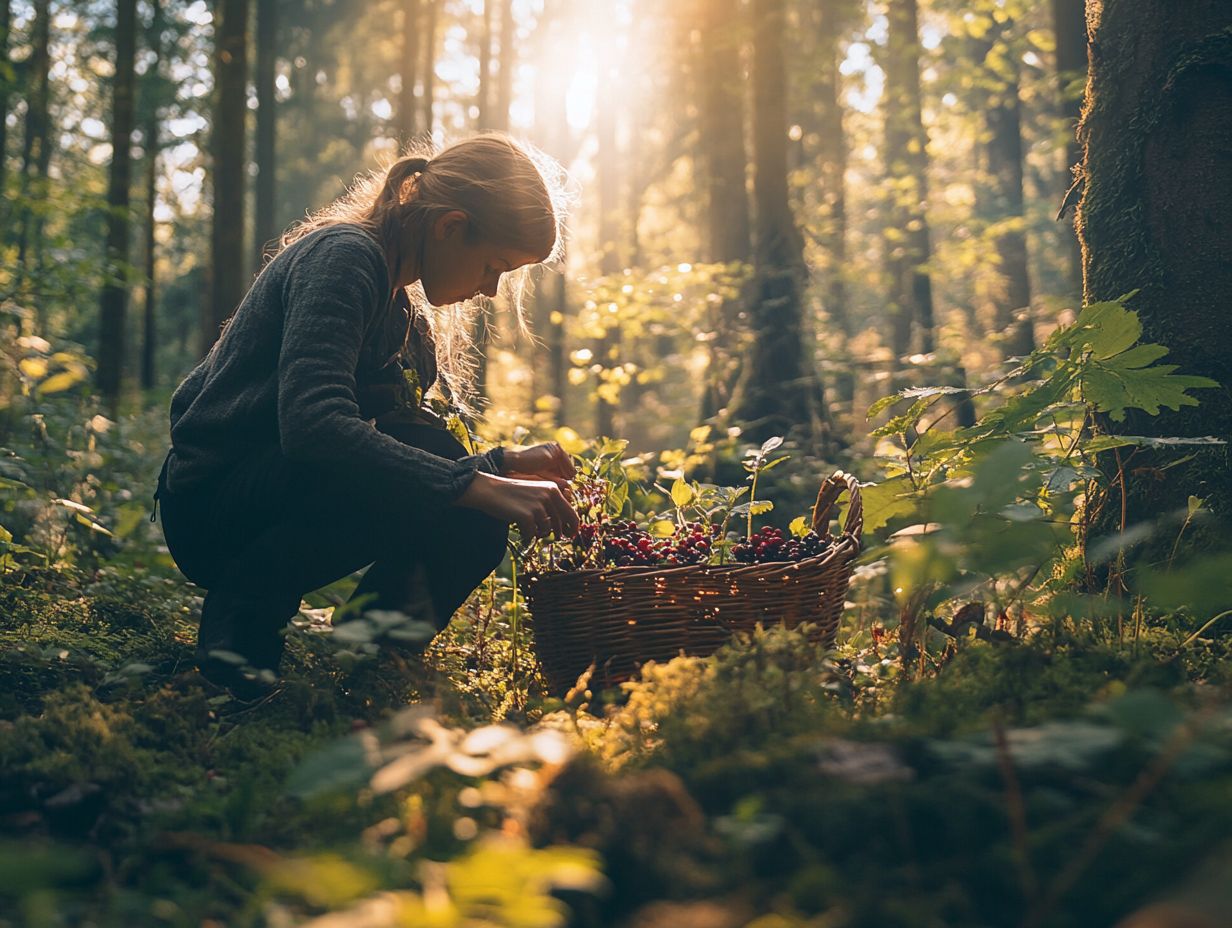
You can find field guides for local foraging at your local bookstore, online retailers, or your local library. Choose a guide specific to your region for the most accurate information.
Are there any online databases for local foraging?
Yes, several online databases can help you identify local plants for foraging! Some popular ones include Eat the Weeds, Foraging Texas, and Falling Fruit.
What are the benefits of joining a local foraging group?
Joining a local foraging group connects you with like-minded individuals who share their knowledge and experiences. You can participate in group foraging trips and learn from others in a hands-on setting.
How do I know if an experienced forager is trustworthy?
When seeking advice from an experienced forager, do your research and fact-check their information. Look for foragers with a good reputation and experience within the foraging community.
What precautions should I take when foraging for local plants?
Always be cautious when foraging. Properly identify the plant before consuming it and avoid areas that may be contaminated, such as near roads or industrial sites. Only take what you need, leaving some for others and for the ecosystem to thrive.
Join a local foraging group today and connect with nature!

